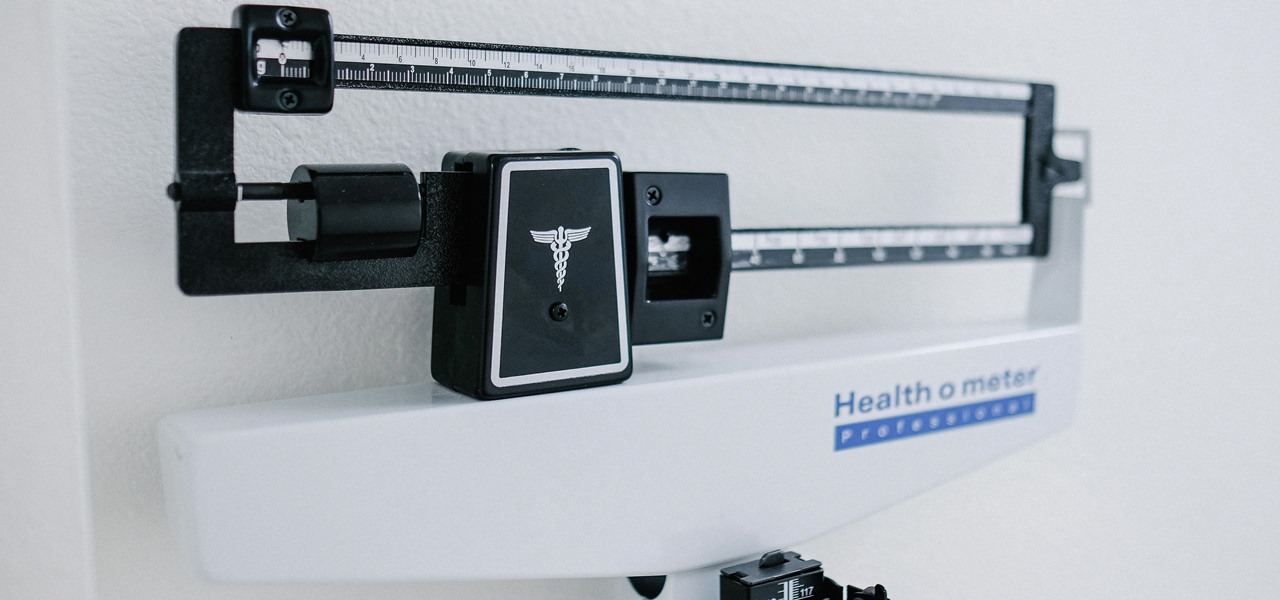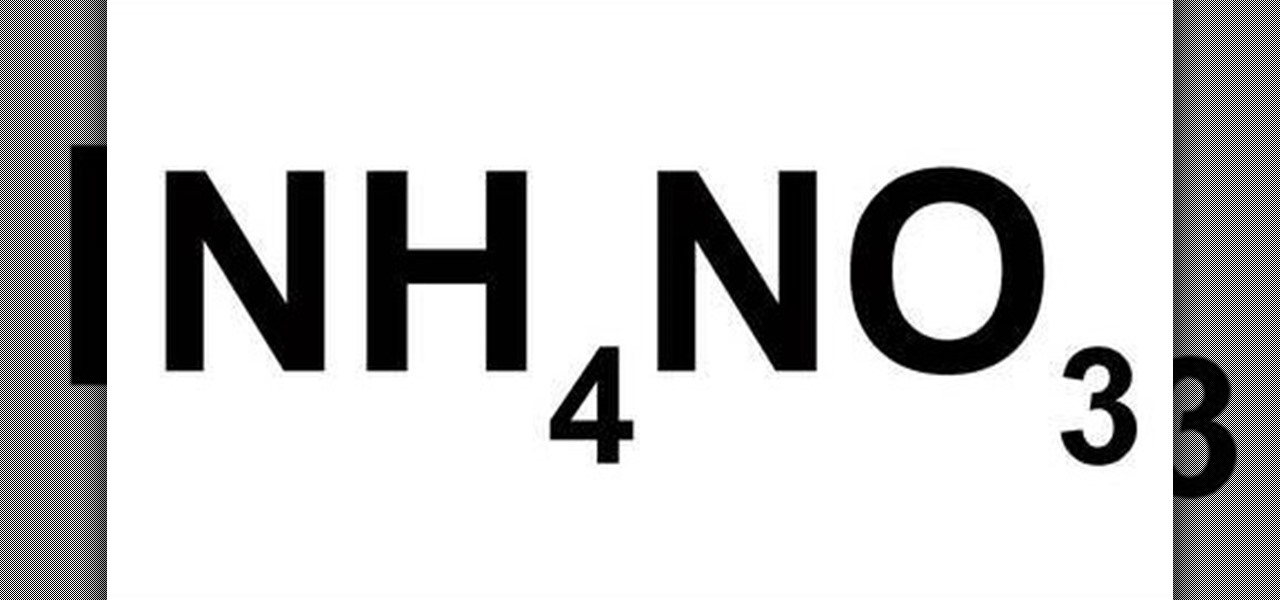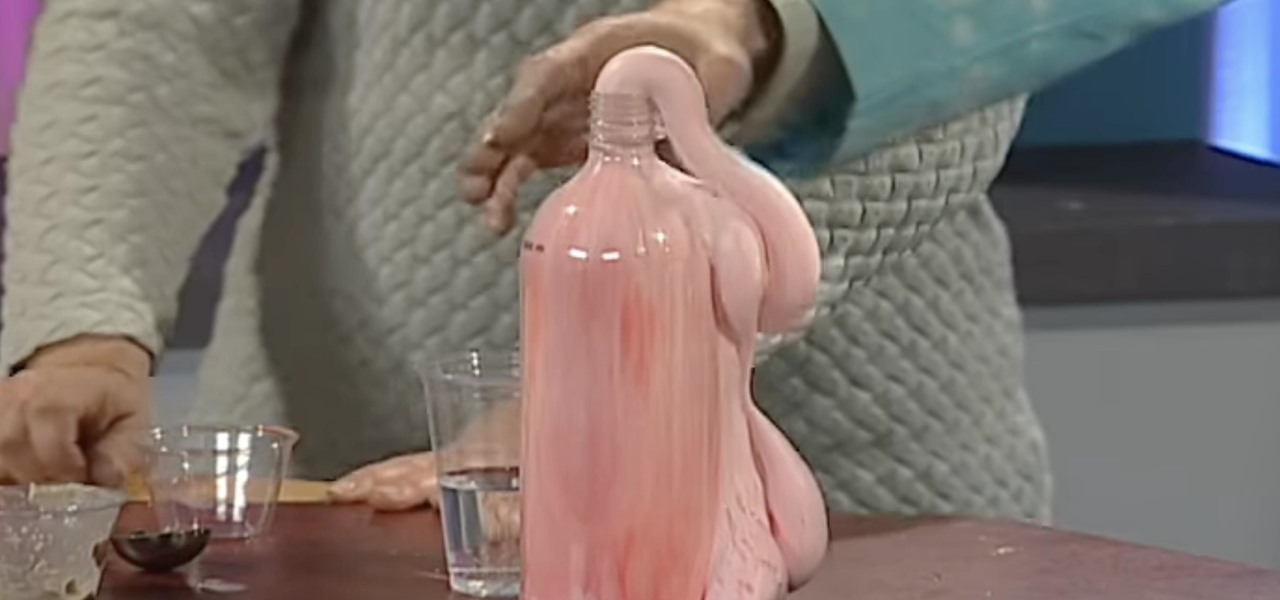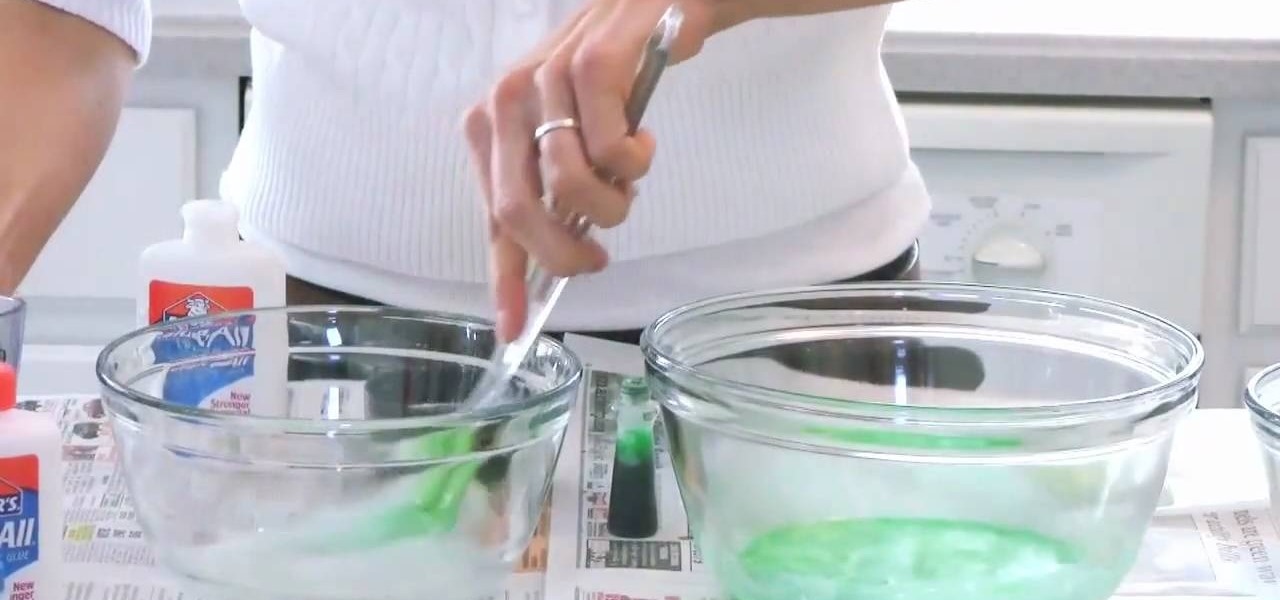Hot Science Experiments Posts

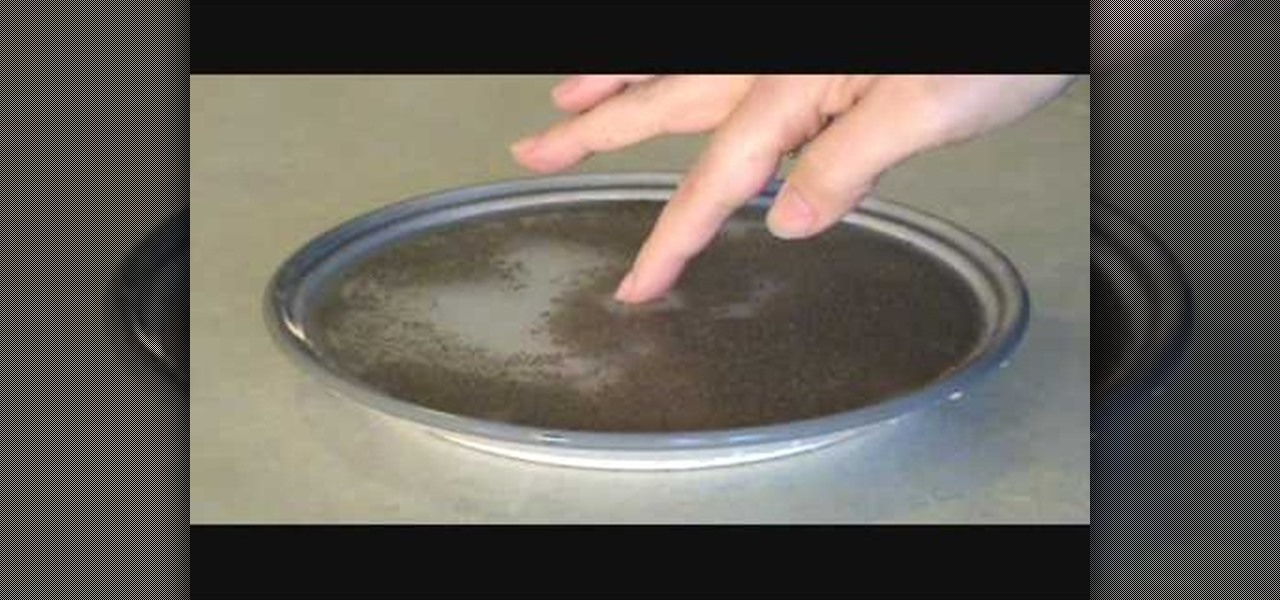
How To: Do a science trick demonstrating surface tension with pepper, soap, and water
Surface tension is one of the coolest things about water. Without it, there would be no waterskiing, and that would be a sad world. This video will show you how to do a cool science magic trick with pepper, soap, and water that demonstrates surface tension. All you do is scatter the pepper on the surface of the water, then dab your finger with dishsoap and touch it to the water. You finger will appear to repel the pepper as the soap disturbs the surface tension of the water. Cool little trick...
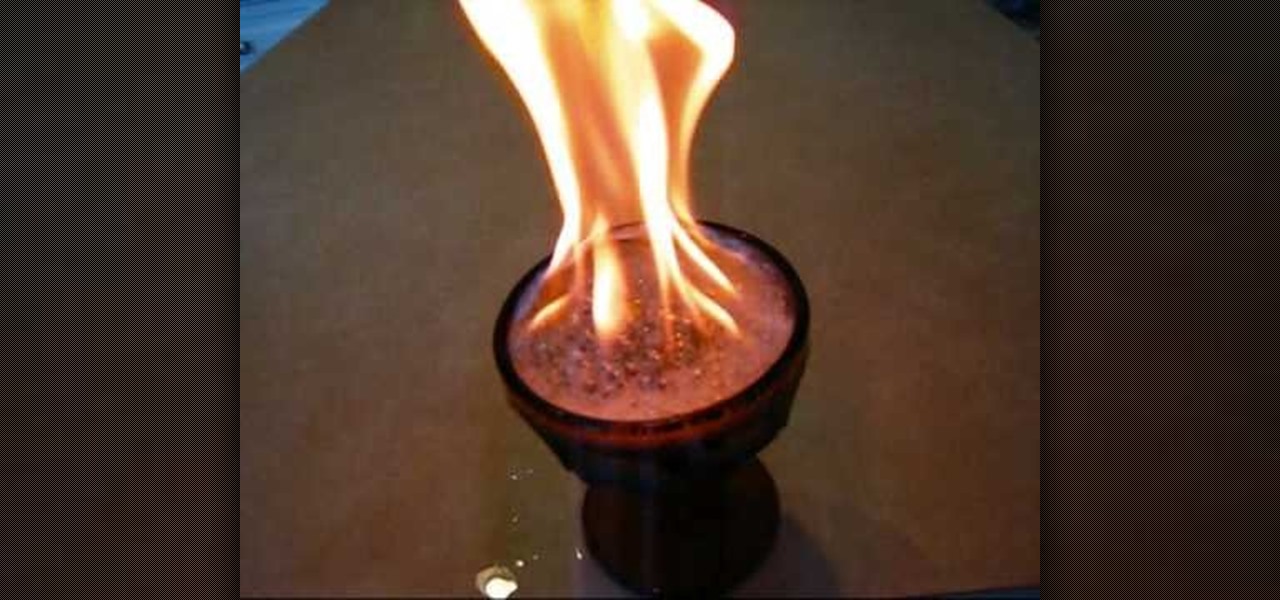
How To: Make burning bubbles with a condensed air dust remover, soap, and water
Bubbles are usually soft, airy, safe things. Not when they're on fire they're not! This video will show you how to create burning bubbles using only condensed air dust remover, water, and soap. You may have seen this done in science class with gas from a Bunsen burner, but this requires much less elaborate equipment and can be done nearly anywhere! FIRE!
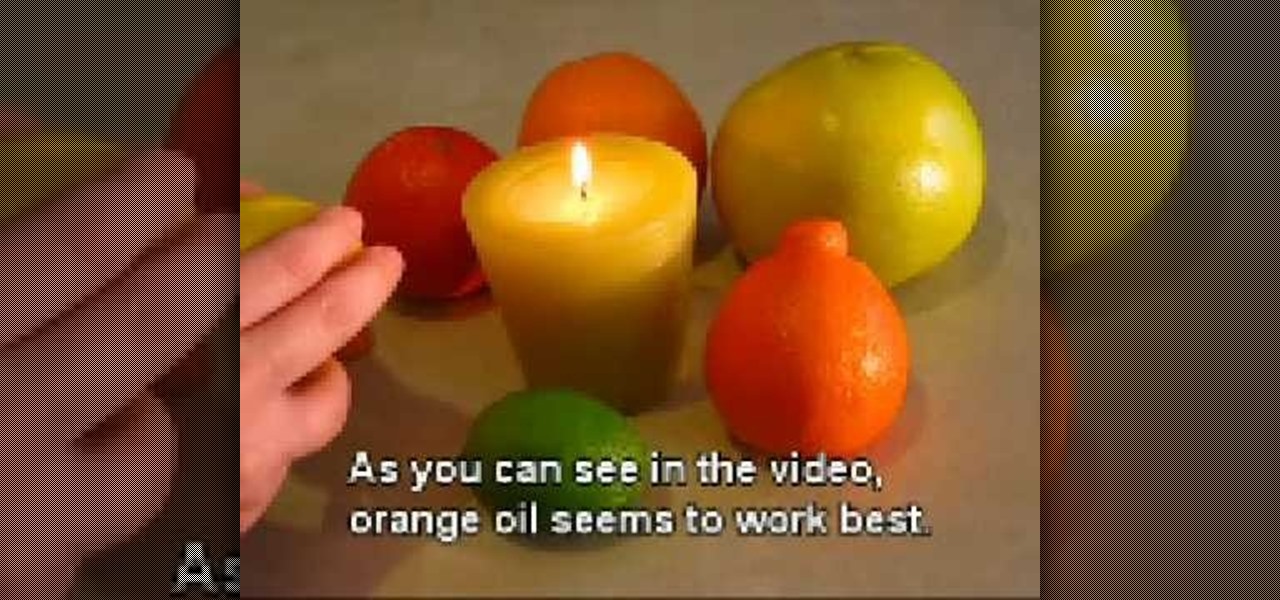
How To: Make flames burn larger with citrus fruit peels
There are so many crazy fun things you can do with fire, this is probably one of the most tame. But it's got flame, so it's still cool. This video will show you how you can squeeze the peels of citrus fruits onto a candle (or large flame for increased fun) and the acid will cause the flame to burn larger and brighter for a flash. Experiment with different peels and flame sources for extended fun. Grapefruit work fantastically.
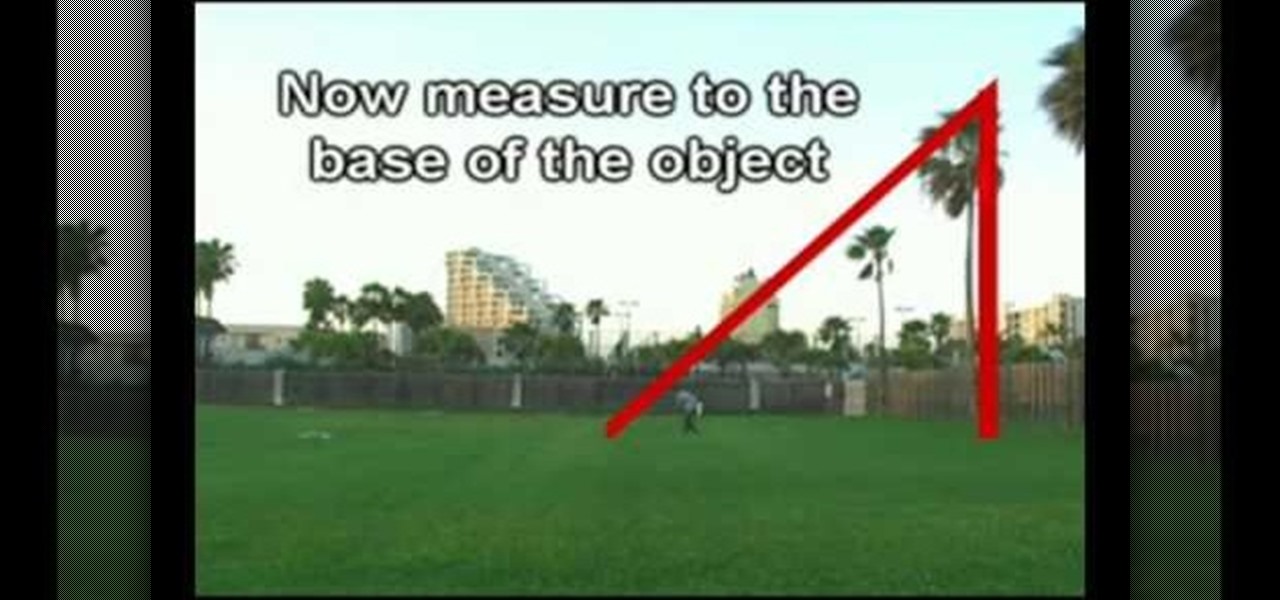
How To: Use a protractor to measure the height of any object
In this video, we learn how to use a protractor to measure the height of any object. First, attach a level to the protractor, followed by a straw at the 45 degree angle. Next, walk back form the object while looking through the straw. Keep walking back until you spot the top of the object through the straw, then measure to the base of the object. After this, you will have an isosceles triangle that has two equal sides. Use these sides to help find what the size of the object is. After this, a...
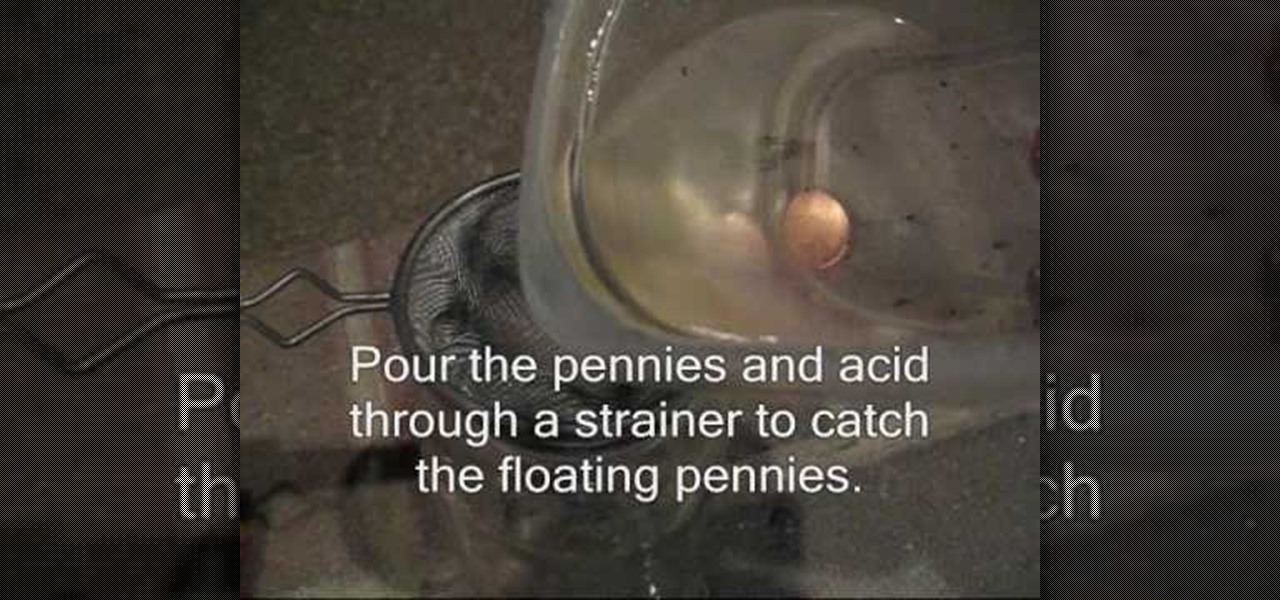
How To: Hollow out a penny
In this video, we learn how to hollow out a penny. First, you need pennies that are dated after 1982, muriatic acid, a plastic container, and sandpaper. First, rub the edge of the penny on sandpaper until the silver color is exposed. Do this on two pennies, then place them in the plastic container. Now, while wearing gloves, pour the acid into the container so the pennies are completely covered. Now the pennies will start to bubble, leaves these in the acid for around six hours. Next, pour th...
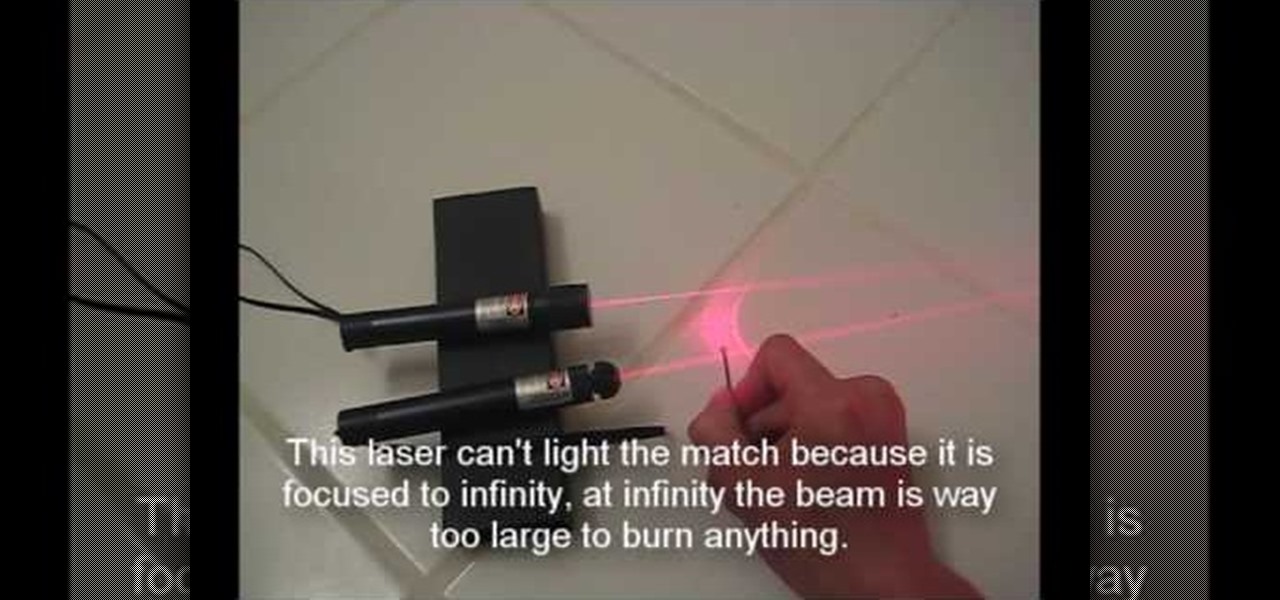
How To: Focus your laser to make it burn
In this video, we learn how to focus your laser to make it burn. The best spot for a laser to burn things is at its focal point. This is where the beam from the laser is at its smallest. If you hold a match in front of the beam, it will light it on fire as soon as it's in front of it. If you put two lasers next to each other going the same direction, it won't be able to burn because the light beam is too large. If you position the lasers so the light is smaller, then they can catch something ...
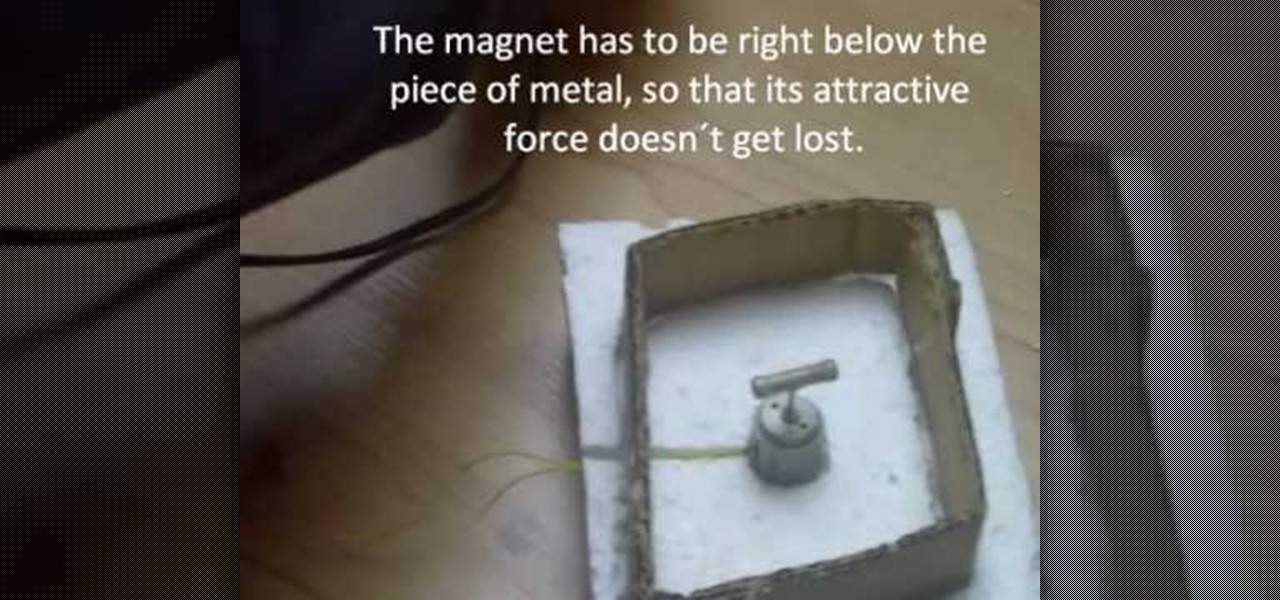
How To: Build a magnetic stirring device
In this video, we learn how to build a magnetic stirring device. First you will need: a block of 1 inch thick Styrofoam, a piece of cardboard, 2 magnets, a small electric motor, a piece of non-magnetic metal, a hot glue gun, and a soldering iron. First, draw the shape of your cardboard square on the foam and cut it out. After this, take your soldering iron and melt away the Styrofoam from the outside. Then, make a hole in the middle for where the motor will be placed and push it inside. After...
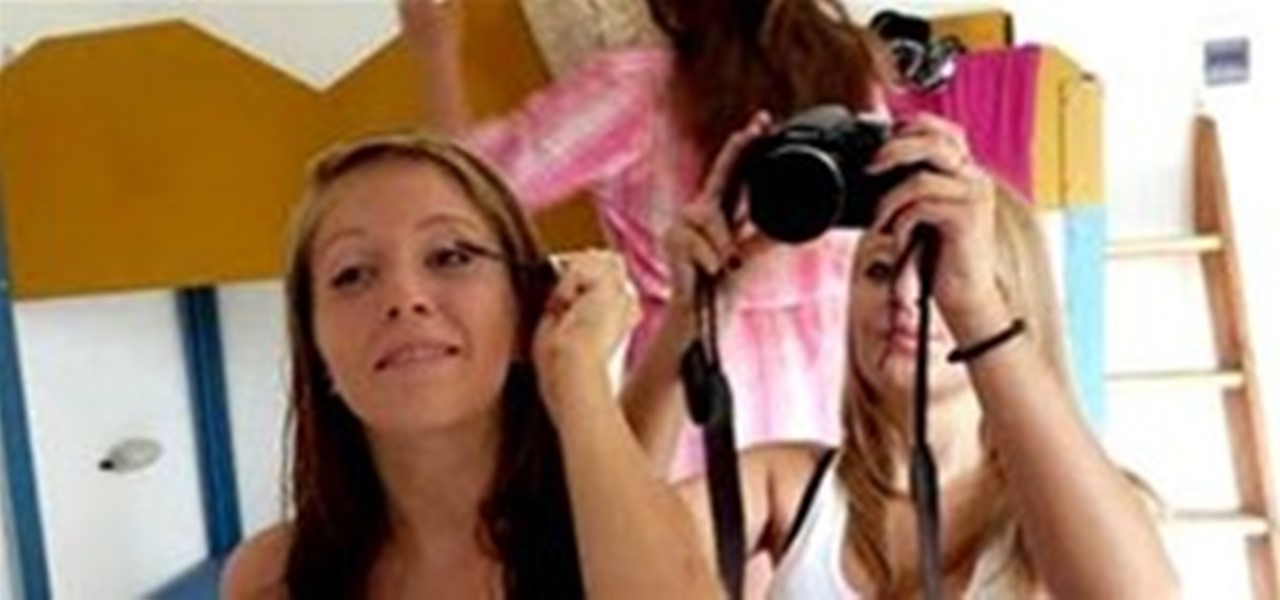
News: Rear End Illusions
Let's take a look at the softer side of illusions! Check out the images below and see if you can crack what's really behind these photos. This type of optical illusion is usually referred to as an ambiguous image. Your brain tries to make quick sense out of the information coming in, and sometimes an interpretation of one image gets preference over the other.

HowTo: Make Elephant Toothpaste
Nope, not the kind used by this elephant dentist: But THIS kind, the kind a mad scientist concocts:
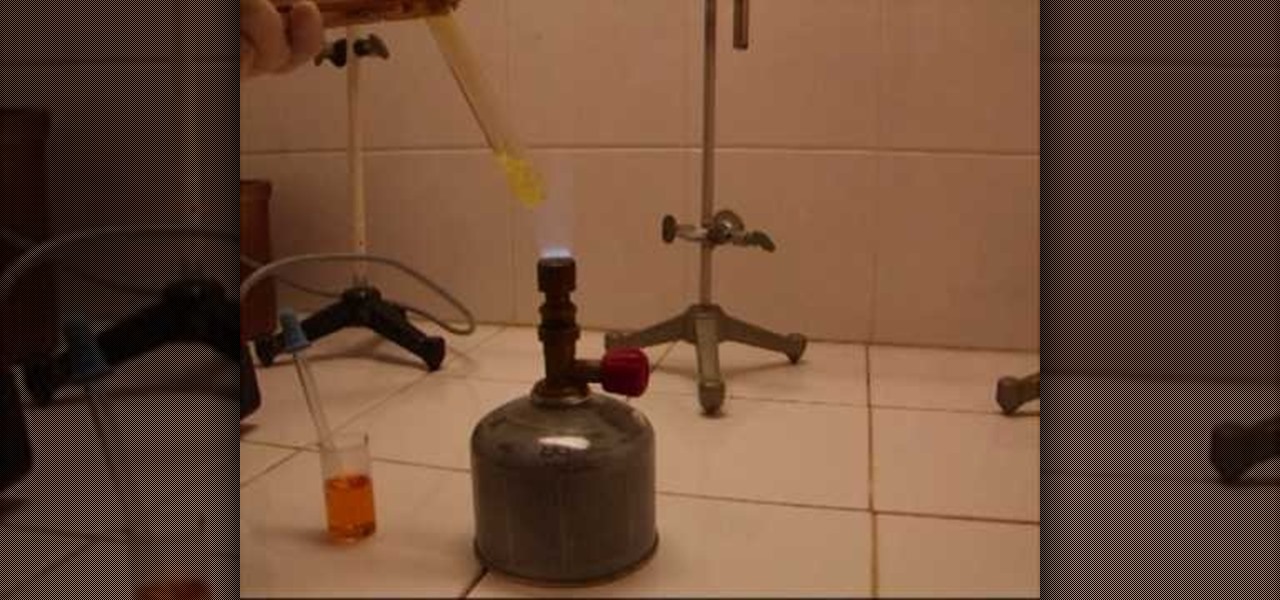
How To: Dissolve gold in aqua regia to make tetrachloroauric(III) acid (gold chloride)
Aqua regia (königswasser in German) is a very corrosive liquid made from a mixture of nitric acid and hydrochloric acid (1:2 - 1:3). This chemical mixture is so corrosive that it can even dissolve gold, and that's what you'll learn about in this video.
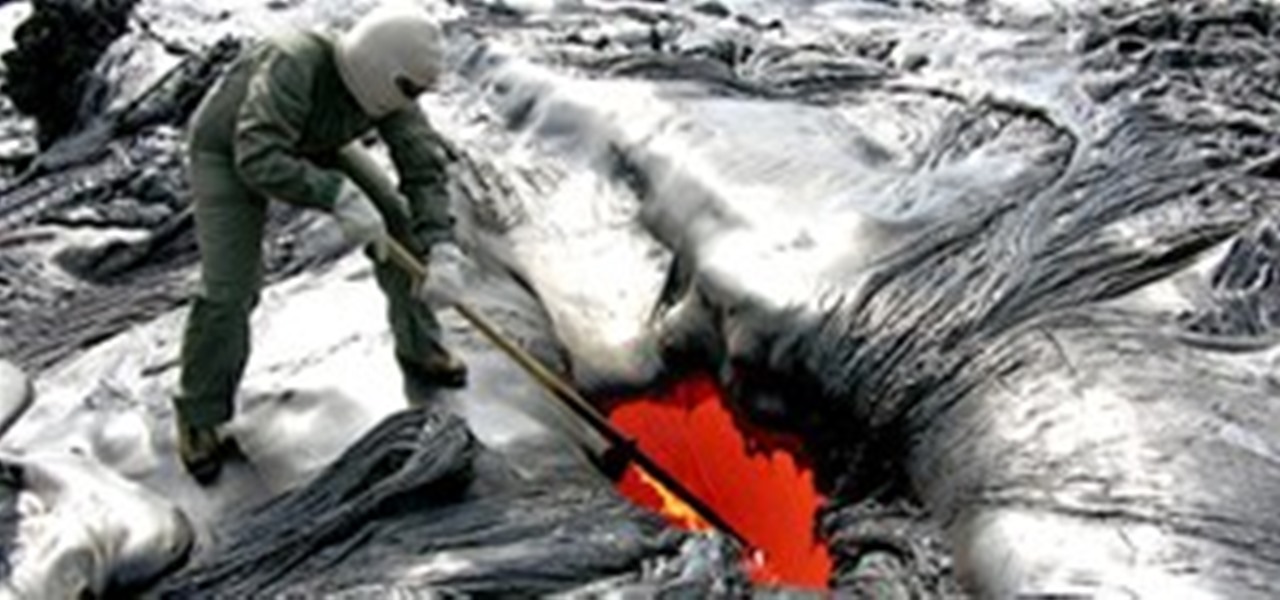
News: 30 Insane College Courses That Will Have You Itching to Go Back to School
PopSci has compiled an amazing list of 30 college labs that would tempt anybody to re-enroll. If you know any high school juniors or prospective grad students, pass this along. They just might reconsider their initial choices.
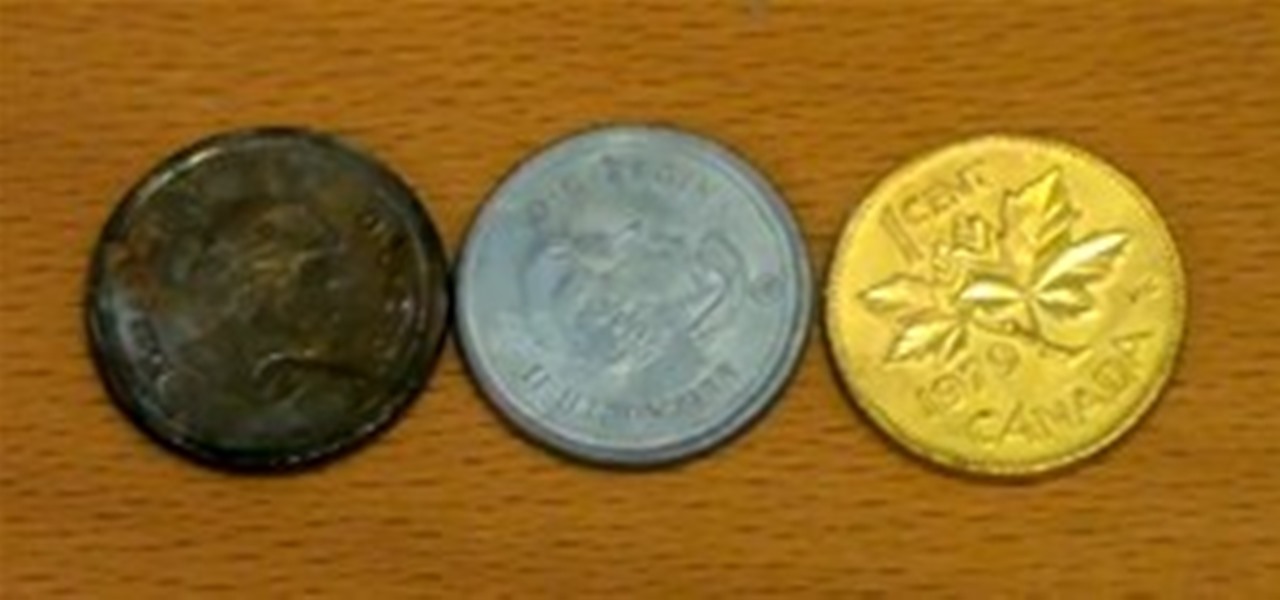
HowTo: Turn Your Piggy Bank to Gold
Calling all alchemists, it's time to make magic. Here's another lesson from our favorite mad scientist, Nurdrage (previously, DIY glow sticks & pencil lead levitaton).

How To: Turn eggs into bouncing balls
In this tutorial, we learn how to turn eggs into bouncing balls. You will need: hard boiled eggs, vinegar, and a jar to make these. First, fill your jar up with vinegar and then drop your egg inside of it. After this, let the egg sit inside of the jar for a couple of days. After this, take the egg out and peel the membrane of off the outside of it. Now, you will be able to use your egg to bounce off of anything. When peeled apart, the contents of the egg will be rubbery as well! This is an in...
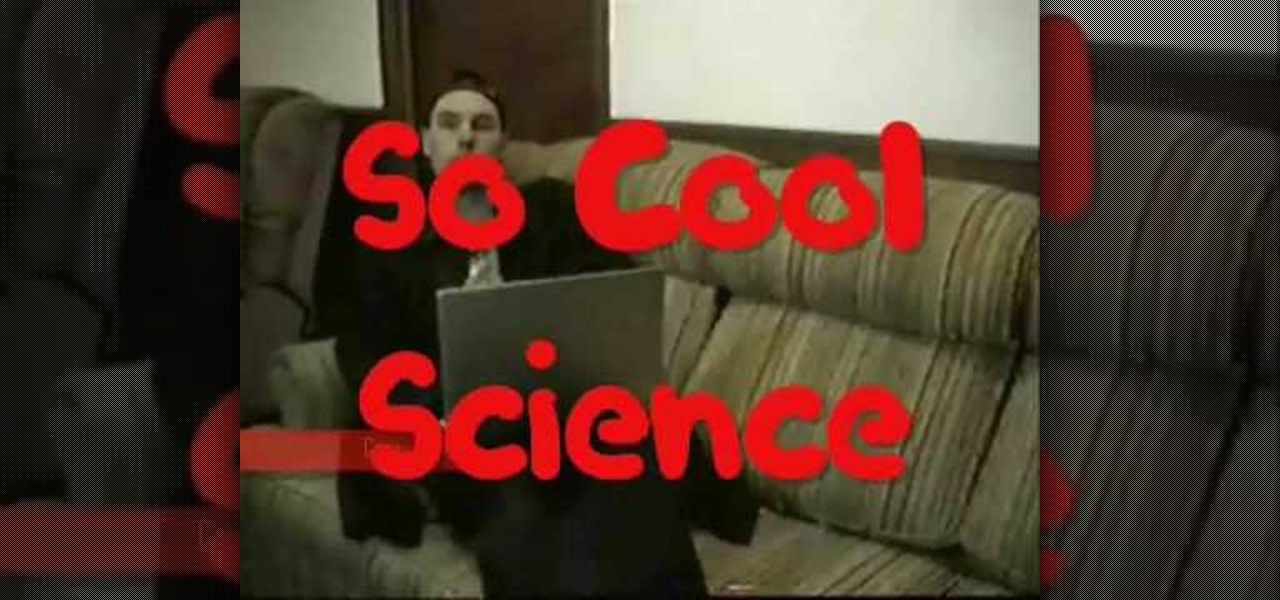
How To: Understand what science & why it's important
Chris tells us how to understand what science is and why it's important. If you didn't have science, you wouldn't have any technology! This includes televisions, cell phones, portable devices, and everything else that science relies on. Basically we would be living like we were in the stone age again! Science impacts so many different parts of our lives, and although it's not all the same type of science, it all matters. Take a few minutes to think about what life would be like without having...
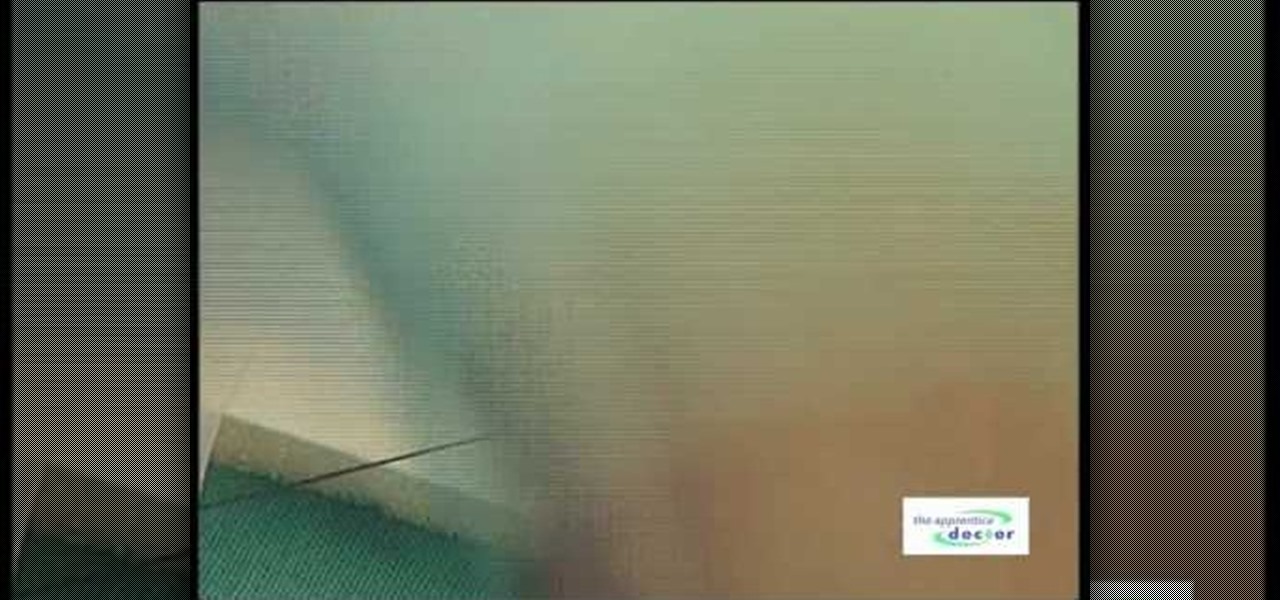
How To: Place a horizontal mattress suture for surgeons
In this video tutorial, viewers learn how to suture. Begin by lifting up the skin on the far side of the laceration with the tissue forceps and insert the needle with some distance far away from the wounded edge. Then lift up the skin with the near side laceration and mirror the course of the needle. Now move somewhat to the right of the subsection of this stitch, parallel to the incision line. Place the second subsection of the horizontal macro-suture like the first part. But this time from ...

How To: Make a pH indicator out of red cabbage
In this video, we learn how to make a pH indicator out of red cabbage. Red cabbage will work because when it absorbs an acid then it changes color and reflects light differently. To do this at home, try to add different types of acids to the cabbage. Start off by putting the cabbage in the blender, then make sure it's shredded. Now, put it in a jar with some boiling hot water. Shake up the jar, then place the water into some separate cups. Now, add chemicals into the juice and depending on th...
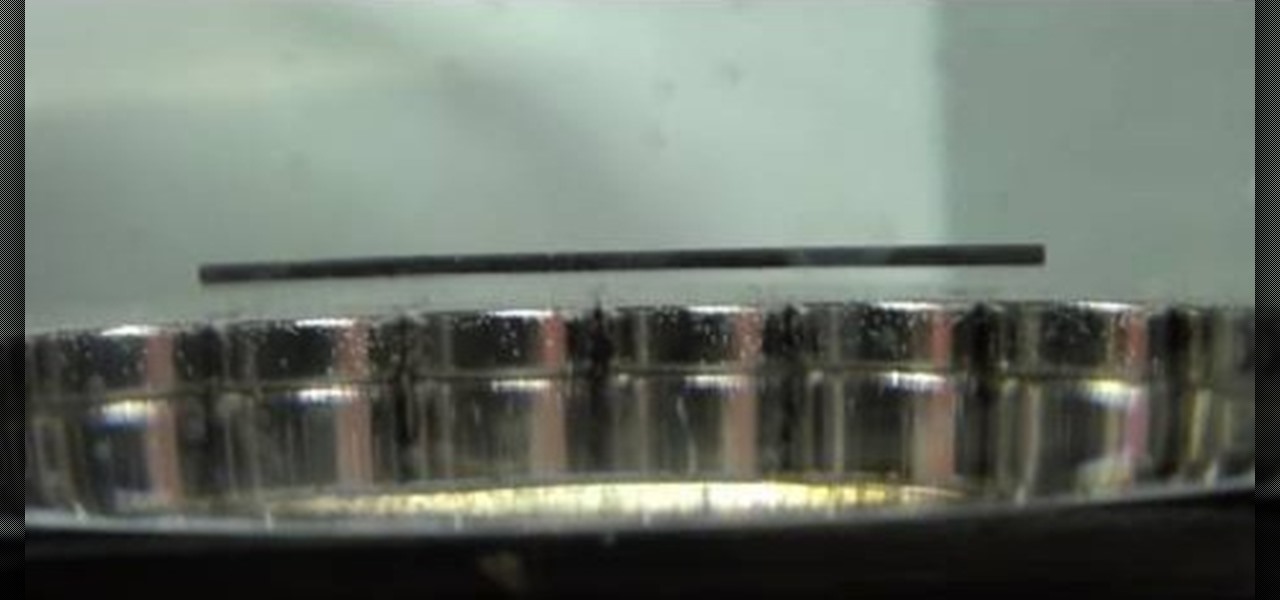
How To: Levitate thin diamagnetic pencil lead with neodymium magnets
In a previous Nurd Rage video (here), Dr. Lithium showed you that pyrolytic graphite was diamagnetic, and that it could be stably levitated over magnets. It was repelled by a magnetic field, and this repulsion was strong enough to levitate it. In this science video tutorial, you'll learn how to levitate plain old pencil lead this time.
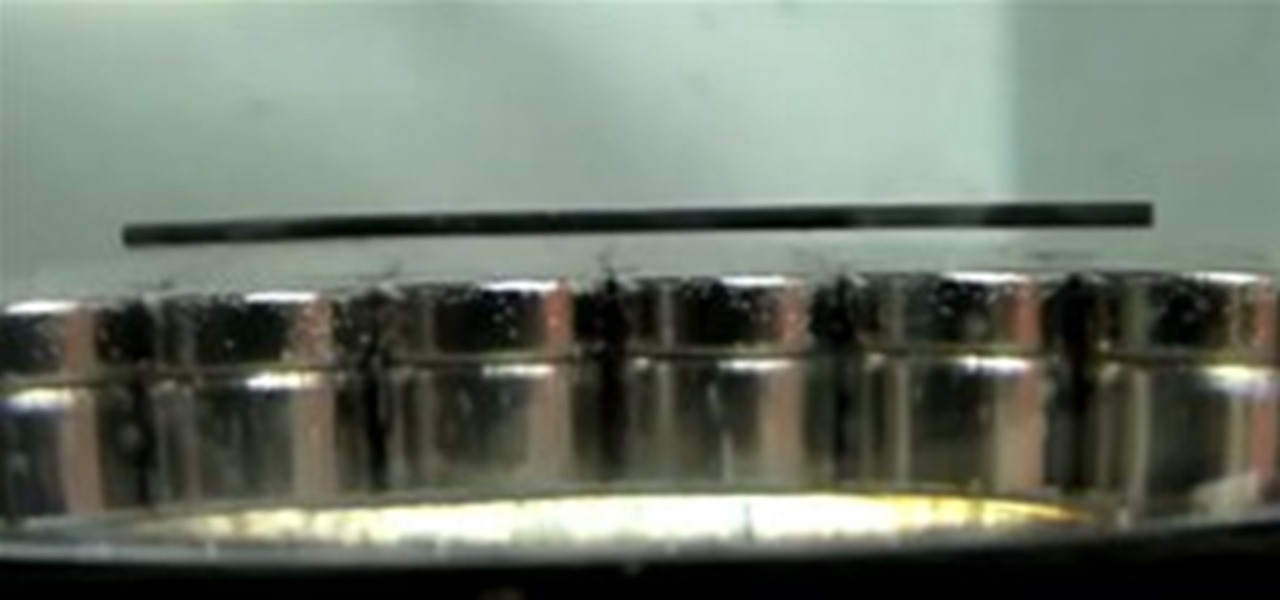
HowTo: Levitate Pencil Lead
The anonymous doctorate of science, Nurdrage, is back with another fascinating HowTo (previously featured, glow sticks). Dr. Lithium's latest video demonstrates how to practice diamagnetic levitation using common household pencil lead and magnets.

News: Krispy Kreme Mitosis
Take a lesson in mitosis (or cell division) with artist Kevin Van Aelst's Krispy Kreme explanatory photography series. Mmm... I think my stomach's growling.
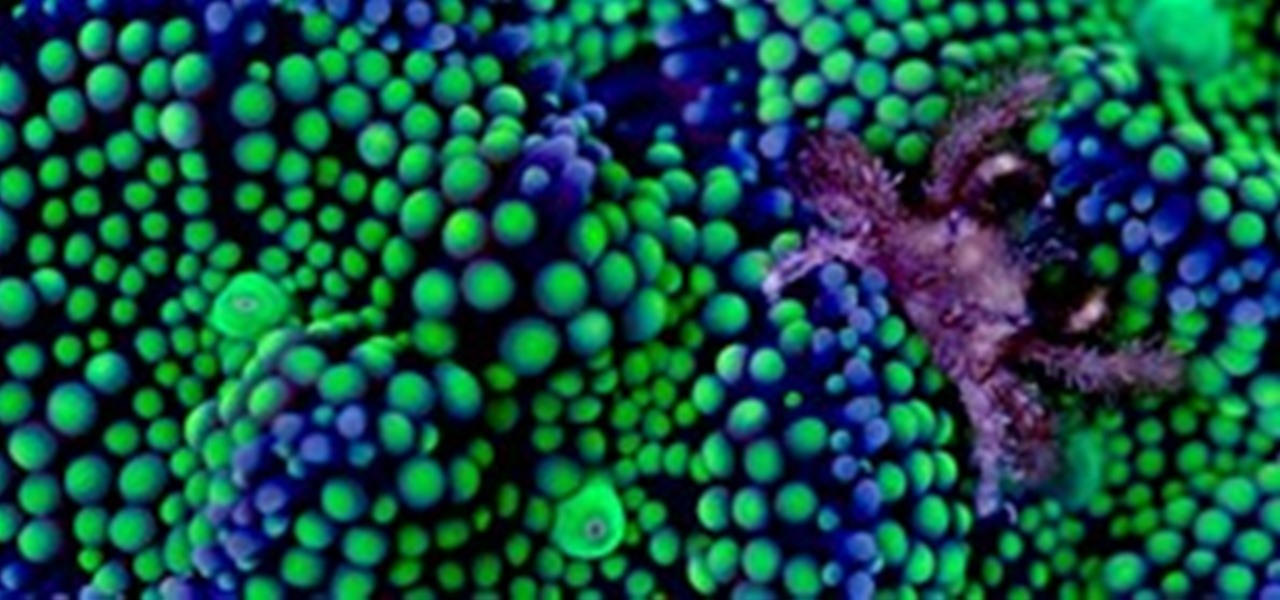
News: In the Face of Nature, Art Doesn't Stand a Chance
Sometimes a human-made representation just can't beat the real deal. You may be convinced once you watch these science-art videos, a collaborative project titled Morphologics, by marine biologist Colin Foord and musician Jared McKay.

HowTo: Extract DNA From Anything Living
As long as you don't mind liquifying your subject in a blender, you can test DNA from virtually anything living with this guide from he Universe of Utah's Genetics Science Learning Center. Learn Genetics uses green split peas as a subject, and suggests fruits, meats and vegetables.
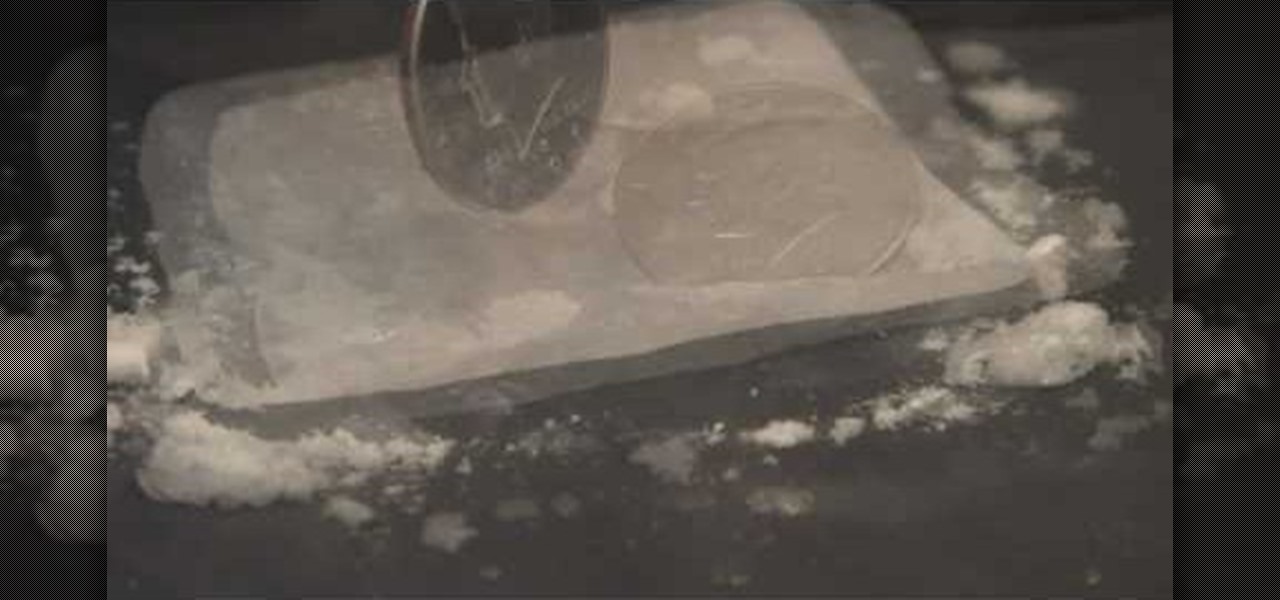
How To: Make a metal coin shake and shiver with dry ice
If you have some dry ice, try this cool science experiment out. It's so easy, you have to try it, at least once! You just need a chunk of dry ice and some metal coins, like a half dollar (which is comprised of copper and nickel).
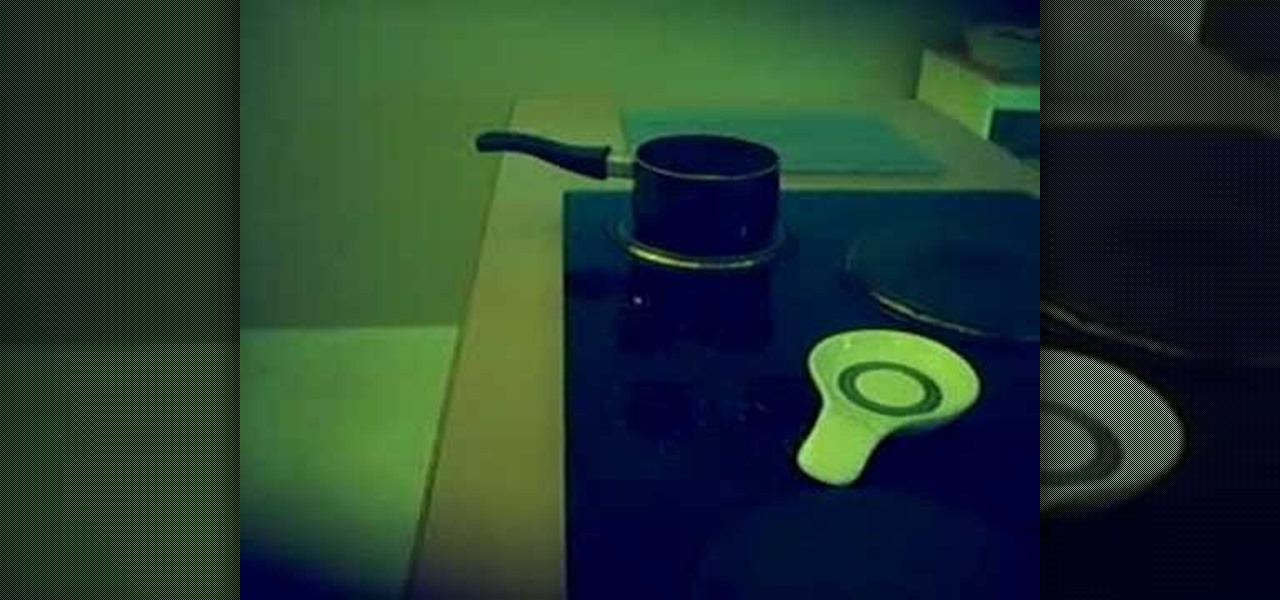
How To: Make a plastic like substance from vinegar and milk
In this video tutorial, viewers learn how to make a plastic substance. The materials required for this experiment are: 1 bowl of milk, 1 cup of vinegar, pot and mixing spoon. Begin by heating the milk in the pot and heat it at medium heat for several minutes. Then pour the milk into a separate bowl. Now add the vinegar into the milk and stir it. Continue stirring until it forms into a solid mixture. Then drain the liquid. This video will benefit those viewers who enjoy experimenting, and woul...
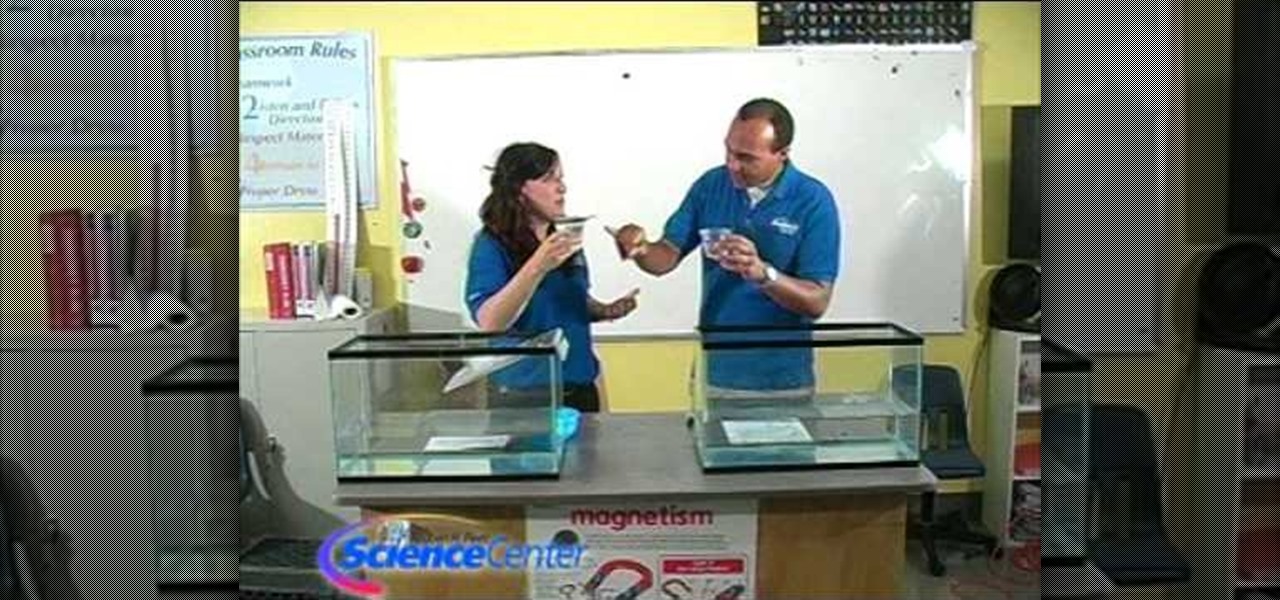
How To: Demonstrate the difference between land & sea ice
In this tutorial, we learn how to demonstrate the difference between land & sea ice. First, fill up two large aquariums with water, then add in a glacier to one aquarium and an iceberg in the other. This will see how the water level changes based on the melted of each different ice item. Draw a line at the water line where it started at, then when the ice melts, check the water levels. When finished, see what the water levels have ended up at. Now you will be able to show this to your student...
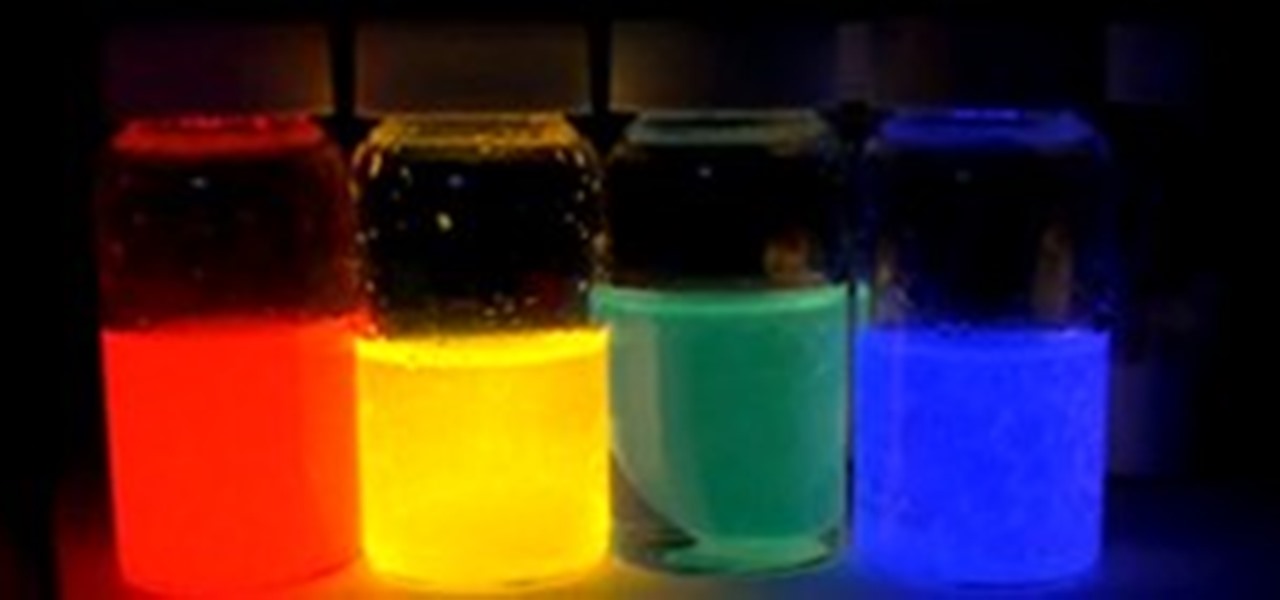
HowTo: DIY Glow Sticks
WonderHowTo favorite (and pal) NurdRage brings us another great science tutorial. Making glow sticks at home is not necessarily cheaper, but it's a great science project. Check out the video below to learn not only how to make the glow sticks, but also all about fluorescent dyes (and why Mountain Dew will not do the same thing). Previously, NurdRage Shatters Mysteriously Procured Human Heart.

News: Drop Dead Gorgeous Periodic Table
Utterly mind blowing CC-licensed photography of the periodic elements by Wikipedia user alchemist-hp. Beautiful examples below, click through for the whole project (in German).

News: Japanese Scientists Turn Dead Animals Into Art
In what appears to be some kind of hybrid science-art project, Japanese researchers have discovered a method for rendering a dead animal's body completely transparent, in order to dye the skeletal system. Simultaneously creepy and beautiful.
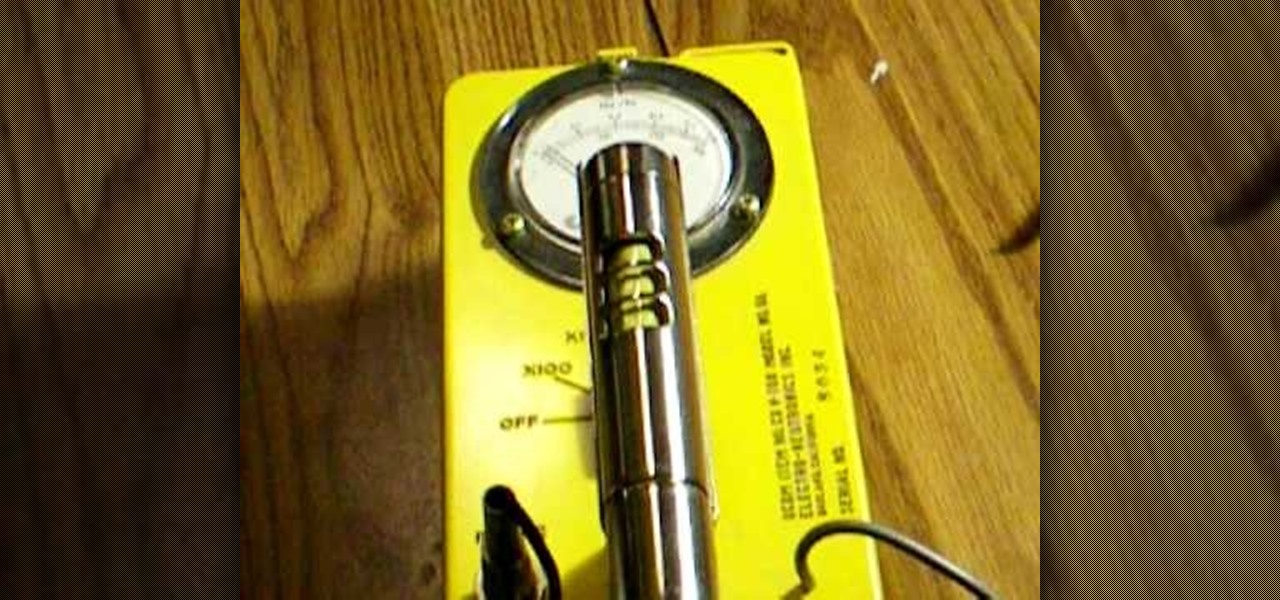
How To: Use radiation detection equipment
In this tutorial, we learn how to use radiation detection equipment. To use the dosimeter, you will remove the cap, then place the pipe on and push down on it. A light will come on, and you can use the knob to zero it. When you look in, you will be able to see it's measured in Roentgens per hour. When you are done using this, zero it again. Next, you will have a CD Geiger counter which has three positions for the knob. Whatever it is set on, you multiply the reading by that number. If you tur...
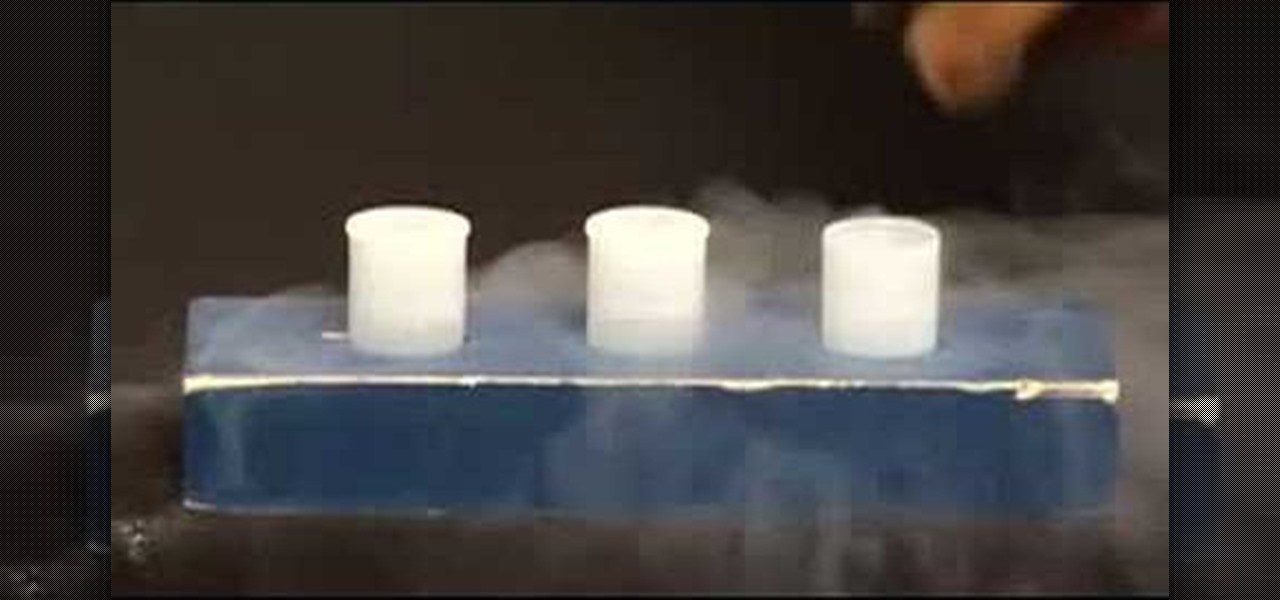
How To: Blow open sealed containers using liquid nitrogen
In this video tutorial, viewers learn how to do a liquid nitrogen experiment. The materials required for this experiment are liquid nitrogen and film canisters. This task is very easy, fast and simple to do. Begin by pouring the liquid nitrogen into the film canisters. Then quickly place the film canister lids on. The liquid nitrogen will eventually become a boiling gas and expand about 700 times. Because of the expanding, the pressure will build in the canisters and result in popping lids. T...

How To: Create an erupting volcano
In this tutorial, we learn how to create an erupting volcano. First, take ammonium dichromate and pour it into a clear plastic dish. Next, grab a blow torch and blow it onto the material. This will make a substance that is black and looks like ash. This will get messy, so make sure you have a newspaper or cloth underneath the dish. Eventually, the material will catch on fire so you can remove the blow torch, then the ash will fall all around the volcano and the sparks will fly out of the midd...
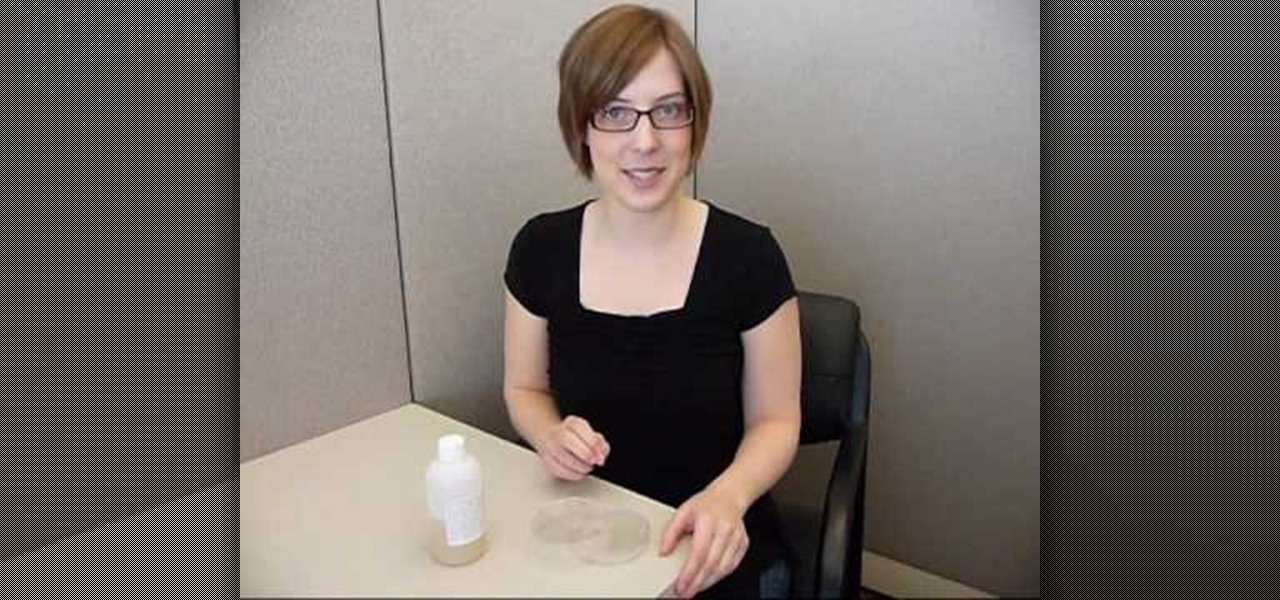
How To: Grow bacteria with agar & petri dishes
In this tutorial, we learn how to grow bacteria with agar and petri dishes. First, prepare your agar by swirling it and then pouring it into an open petri dish. Next, close the cap to the petri dish and let it sit for an hour. Next, grab a q-tip and swab it on a surface you prefer. After this, swab it onto the petri dish and let it sit for around a week. When you come back to the dish, you will see all the bacteria that has grown! This is a great science experiment to do for children in schoo...

How To: Dissolve ruthenium metal with household bleach
You've manage to get your hands on some ruthenium, and now you want to destroy the hard silvery-white metal of the transition series. Well, you're going to try all kinds of ways to dissolve this odd metal, but the only successful way to dissolve ruthenium is with a common household cleaner… bleach.

News: Multiply Each Tiny Dot By a Billion
Yup. Every single dot represents a galaxy containing BILLIONS of stars. Holy... Just think about it. Insane.

How To: How Long Can a Man Survive in a Deadly Space Vacuum?
Here at WonderHowTo, we certainly have an affinity for outer space-related topics, so I couldn't pass up this horrifying video of a man who just barely survived a simulated space vacuum.

News: Why Are Our Brains Fooled By Optical Illusions?
My mind is playing tricks on me! Discover Magazine systematically dissects five fantastic optical illusions. The scientific explanations are logical:

How To: Make sodium acetate with homemade items
In this tutorial, we learn how to make sodium acetate. First, pour a bottle of vinegar into a large pot on a stove. Next, add in baking soda slowly until it is completely dissolved into the vinegar. Stop adding the baking soda once the mixture doesn't bubble anymore. Now, turn the heat to medium and let the mixture boil down until you get a rich gold color. Now, grab a box of activated filter carbon and pour it into the bowl with vinegar and baking soda. When finished, mix the product togethe...
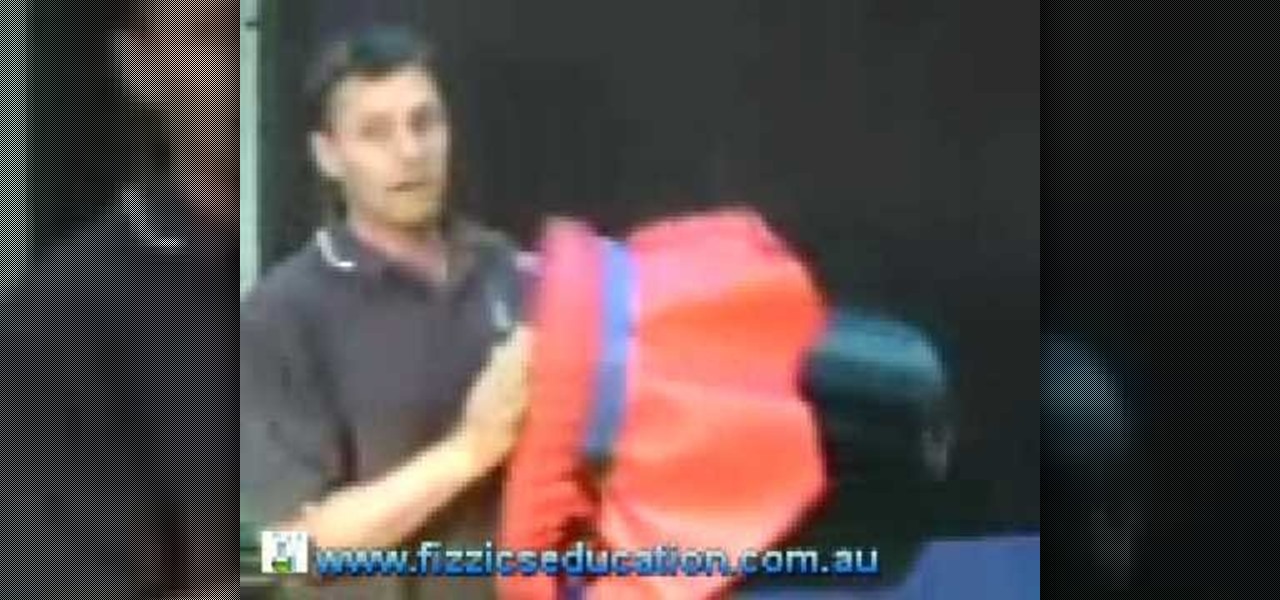
How To: Make smoke or fog rings with a rubbish bin
In this Education video tutorial you will learn how to make smoke or fog rings with a rubbish bin. This is really very easy and simple to do and takes practically no time. For this you will need a smoke machine like the ones used in night clubs, a rubbish bin, piece of oil cloth and a strap. Cut out the bottom of the bin and cover the top of the bin with the oil cloth and strap it up. When you push on the oil cloth, air will go out of the hole at the bottom. Now fill the bin with smoke from t...

How To: Craft a mobius strip out of paper
Mr. G shows us how to craft a mobius strip out of paper in this video. First, take a sheet of copy paper and fold it in half length wise and crease it down the middle. Now, cut the paper on the crease so you have two strips of paper. Next, lay the papers end to end and tape them together. Now, the strip and give it half of a twist and attach it together with tape on one of the ends to the other. Now get a felt tip pen and draw a line down the middle of the strip. Now as you roll the paper, yo...
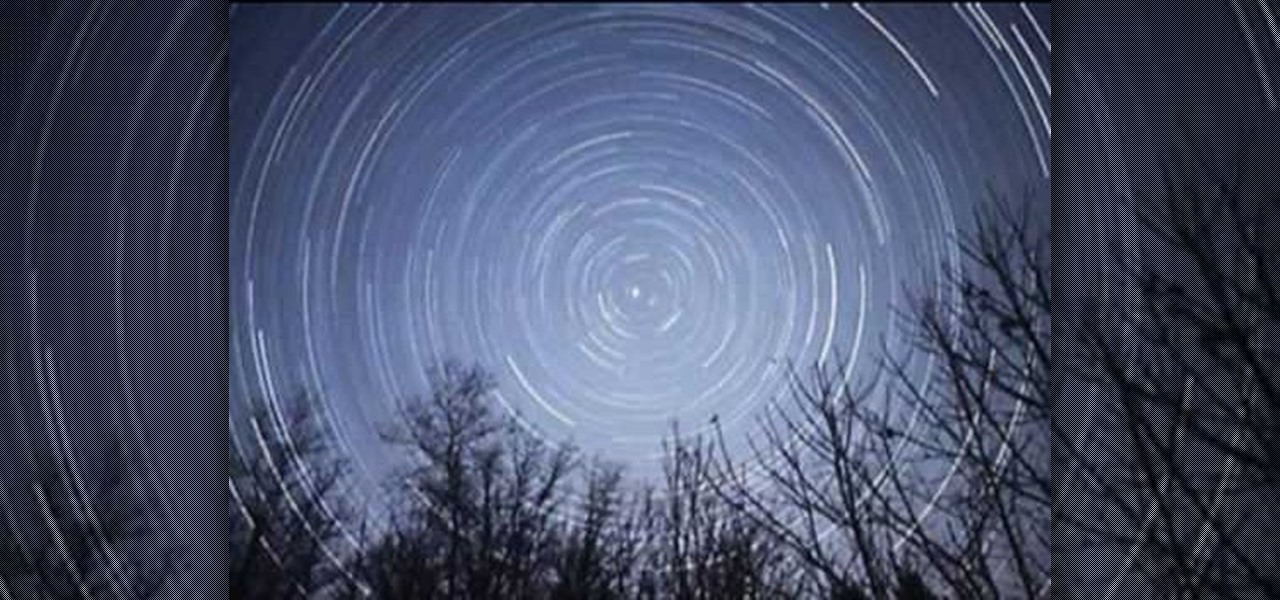
How To: Find the North Star, Polaris
In this tutorial, we learn how to find the North Star. To find this, measure the angle distances on the sky, while using your hand stretched out at arm's length. For the angles, three joined fingers make 5 degrees and a fist makes 10 degrees. You can make 15 to 20 degrees using your entire hand. Polaris is in the center of the sky, but it is not the brightest star there is. If you can find the Big Dipper, you will be able to find the North Star because it's in line with this. By using this te...
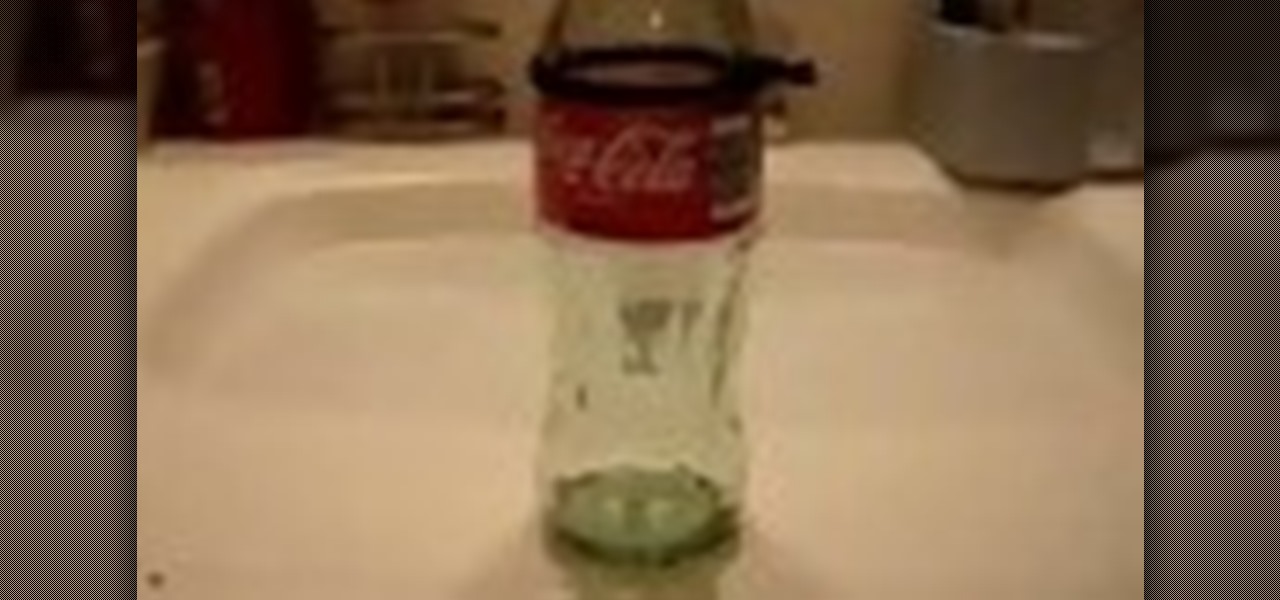
How To: Cut a bottle
In this tutorial, Tony Vo teaches us how to cut a bottle. You will need: a glass bottle, yarn, lighter, sink of cold water, and acetone or alcohol. First, take your glass bottle and tie a piece of yarn around the part you want to cut. Wrap the yarn two times around, then tie it tie it tightly. Now, take the acetone and drop it onto the yarn until the entire piece is saturated. Next, take your lighter and burn the yarn on the bottle. As soon as the flames die down, place the bottle into a sink...



